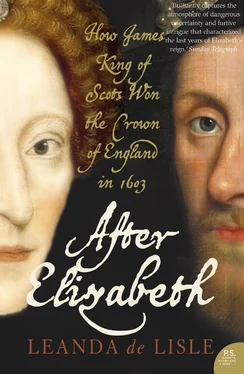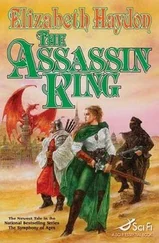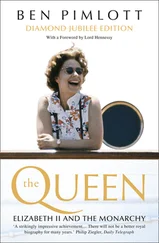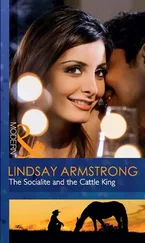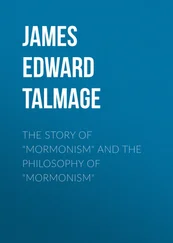That January, 1603, James’s court was at Holyroodhouse in Edinburgh. Scotland’s capital was modest in size but dramatic in appearance, as the Earl of Essex’s former secretary Fynes Moryson described:
The City is high seated, in a fruitful soil and wholesome air, and is adorned with many noblemen’s towers lying about it, and abounds with many springs of sweet waters. At the end towards the East is the King’s palace joining to the monastery of the Holy Cross, which King David the first built, over which, in a park of hares, conies and deer, a high mountain hangs, called the chair of Arthur. From the King’s palace … the City still rises higher and higher towards the west, and consists especially of one broad and very fair street … and this length from the East to the West is about a mile, whereas the breadth of the City from the north to South is narrow, and cannot be half a mile. At the furthest end towards the West, is a very strong castle which the Scots hold unexpugnable … And from this castle, towards the West, is a most steep rock pointed on the highest top, out of which this castle is cut. 3
Holyrood itself was also striking, with its grey stone courtyards and towers emulating the chateau of Chambord. It was reported to be in an ‘altogether ruinous’ state in 1600, but repairs costing £1,307 13 shillings and 10 pence had since been carried out and it had been furnished with several new items, including gold cloth curtains, a £20 silver water pot, several velvet chairs, eight silver chandeliers and a gilded plate worth £86. James’s private chambers were on the first floor of the northwest tower, built by his grandfather James V. There was an outer chamber to the east and an inner bedchamber to the west – the door and window frames having been painted red during his grandfather’s time. Directly above these rooms were those of James’s wife, Anna, the twenty-eight-year-old youngest daughter of Frederick II of Denmark. A new brass chandelier hung outside her door. 4
There were no Christmas celebrations as there were at Whitehall: the Kirk had abolished them when James was nine. Nor were there some of the usual court entertainments. Plays, which were an English obsession, were frowned on. There were, however, pageants and fireworks, visits to the royal lion house and hunting in the park. The structure of court life was relaxed, much closer to the informality of the French model than the English. While Harington complained that Elizabeth lived ‘shut up in a chamber from all her subjects and most of her servants’, James’s courtiers wandered in and out of his rooms quite freely, and dozens had open access to his Bedchamber. Royal meals were another striking point of comparison. Elizabeth did not eat in public. Instead a great table was set near her throne in the Presence Chamber. A cloth was laid and a courtier entered with one of her ladies. They brought the cover to the table and made elaborate obeisance. After trying the food some of it was carried through to the Privy Chamber where Elizabeth would eat and drink with her habitual restraint. Royal meals in Scotland, by contrast, were convivial affairs with plenty of wine drunk and coarse language heard.
‘Anyone can enter while the king is eating,’ the English diplomat Sir Edward Wotton reported after a visit in the winter of 1601/2; ‘the King speaks to those who stand around while he is at table … and they to him. The dinner over, his custom is to remain for a time before retiring, listening to jests and pleasantries. He is very familiar with his domestics and gentlemen of the bedchamber.’ 5 Most of these domestics had served James since he was a child – his valet William Murray had been with him since he was two.
The royal table was laden with roasted game and boiled mutton, wine and ale, but did not include any fine food that was commonplace in a great English house. Fynes Moryson complained that the Scots had ‘no art of cookery, or furniture of household stuff but rather rude neglect of both’. Most Scots ate ‘red colewort and cabbage, but little fresh meat’ and even at the house of an important courtier he found the table ‘more than half furnished with great platters of porridge, each having a little piece of sodden meat’. 6 James, however, liked his food simple, just as he declared that he preferred ‘proper, cleanly, comely and honest’ clothes over being ‘artificially trimmed and decked like a courtesan’. His courtiers wore plain English cloth, ‘little or nothing adorned with silk lace, much less with lace of silver or gold’, and the style was French – ‘all things rather commodious for use than brave for ornament’. 7
James particularly disliked the wearing of earrings and was impatient of the fuss required to dress long hair. He kept his own reddish locks cropped short and his suits were usually dark and adorned with nothing more than a few enamel buttons. Wotton described the King as having a youthful face – he ‘does not seem more than twenty-eight, or thereabouts’ – and of being average in height, with broad shoulders and a ‘vigorous constitution’. He would go hunting whenever he could, often spending six hours a day galloping across country with a loosened bridle. Although it was a common pursuit amongst monarchs, and one his mother had enjoyed, her former emissary, Monsieur de Fontenay, complained that James’s passion for hunting amounted to an obsession and that he put this recreation before his work. James admitted in return he did not have much stamina for business, but he claimed he could achieve more in one hour than others in a day; that he could speak, listen and watch simultaneously and sometimes do five things at once. He was certainly a mass of nervous energy. He paced his rooms ceaselessly, fiddling with his clothes, hating to stay still even for a moment. An Englishman later described James’s twitching as resembling that of a man sitting on an anthill. 8 But if James was unable or unwilling to concentrate on routine administrative work, Fontenay had to agree with the King that his mind was exceptionally quick:
Three qualities of mind he possesses in perfection: he understands clearly, judges wisely and has a retentive memory. His questions are keen and penetrating and his replies are sound. In any argument, whatever it is about, he maintains the view that appears to him most just, and I have heard him support Catholic against Protestant opinions. He is well instructed in languages, science, and affairs of state, better, I dare say than anyone else in his kingdom. In short he has a remarkable intelligence, as well as lofty and virtuous ideals and a high opinion of himself. 9
James’s childhood friend, the Earl of Mar – whom James nicknamed ‘Jocky o’Sclaittis’ – had been telling the English court that the King’s body was as agile as his mind, but, as fit as James was, this was very far from the truth. Sir Edward Wotton tactfully described the lower half of James’s body as ‘somewhat slender’. In fact his legs were so weak he could barely walk before the age of seven and he never did so normally. Fontenay observed he had an ‘ungainly gait’ and others mention he meandered in a circular pattern and leant on the shoulder of one of his courtiers as he walked. The muscles in James’s face and mouth also appear to have had some weakness and his manner of eating and drinking was judged crude. One infamous memoir claims that James had ‘a tongue too large for his mouth, which made him drink very uncomely, as if eating his drink, which came out into the cup of each side of his mouth’.
Such descriptions suggest that James may have suffered from cerebral palsy, caused by damage to the brain before, during, or shortly after his birth. 10 But there is another aspect to the kind of brain damage James suffered that has not previously been explored. About 60 per cent of individuals with cerebral palsy have emotional or behavioural difficulties. James’s restlessness, his inability to concentrate on routine administrative work, his hyper-concentration on what did interest him, his passion for a high stimulation activity like hunting are all characteristic of the contentious Attention Deficit Hyperactivity Disorder, which, like cerebral palsy, is said to have a neurological basis.
Читать дальше
